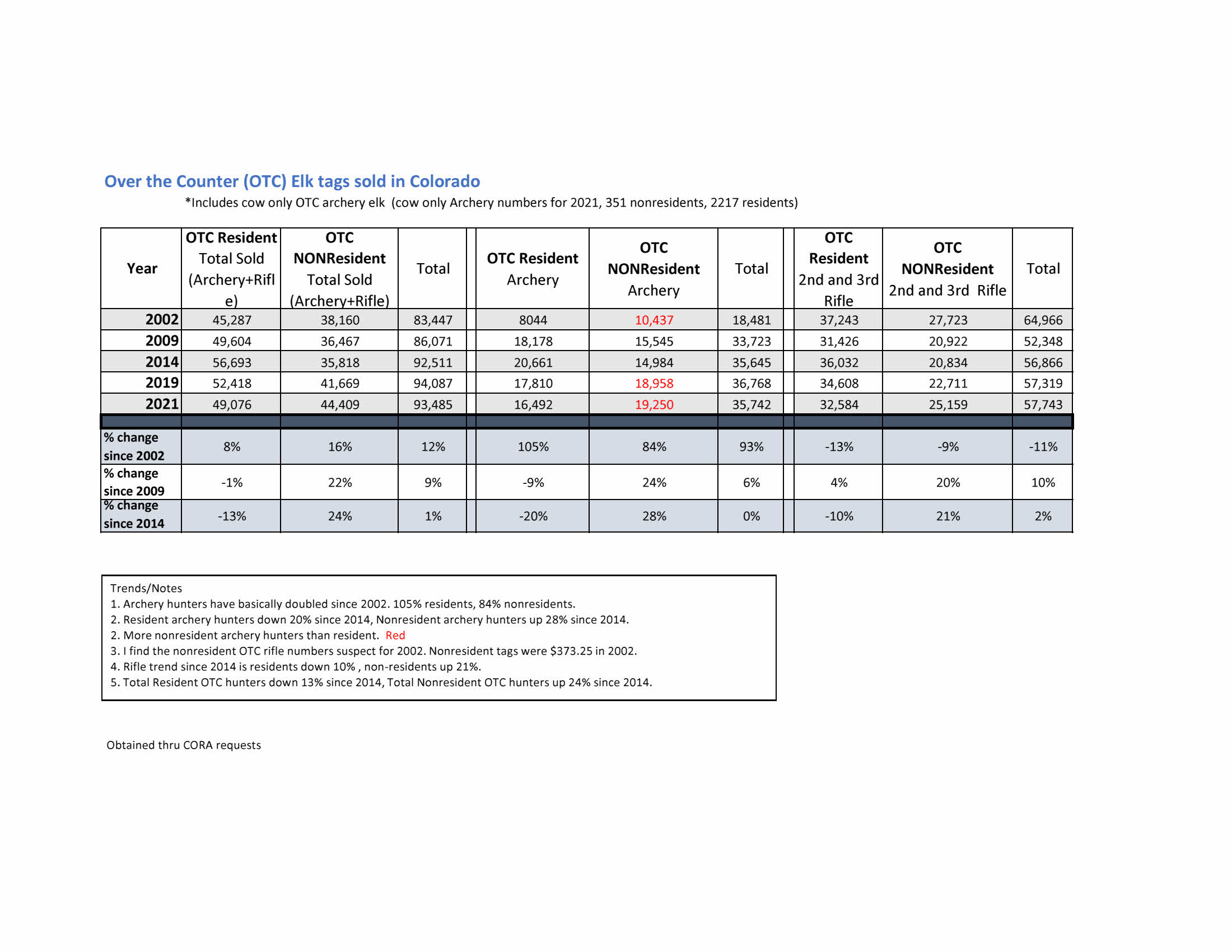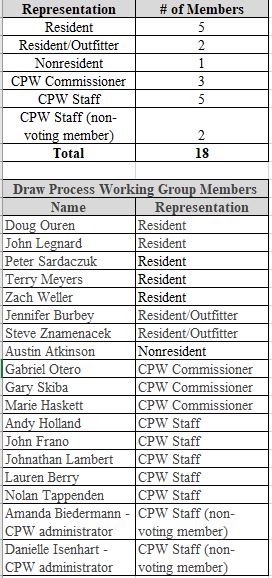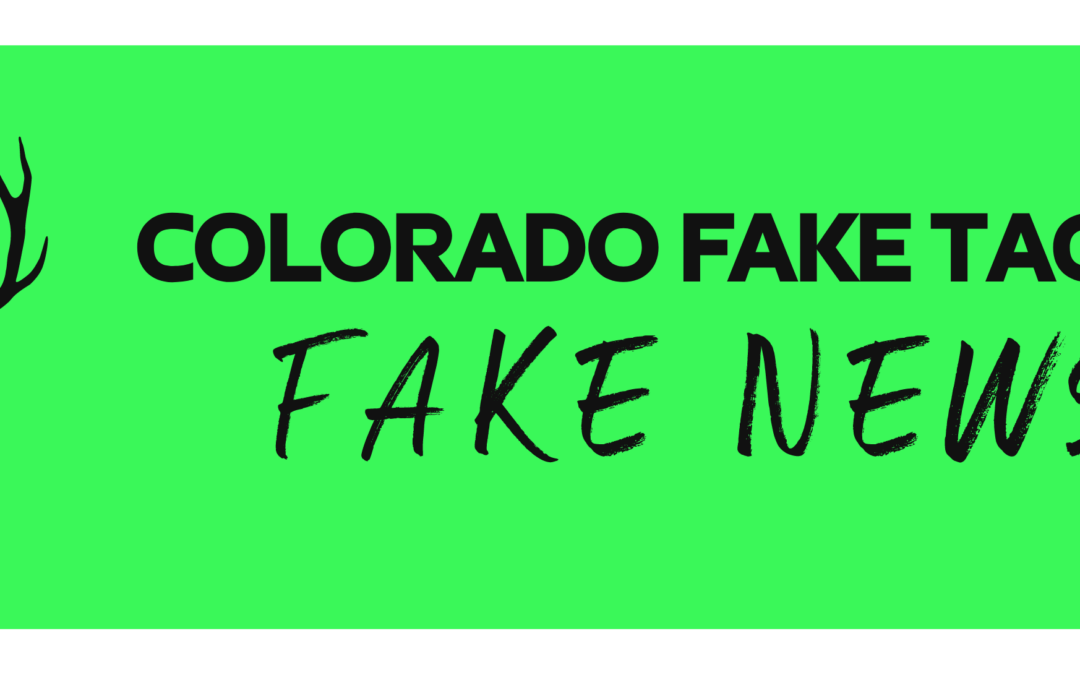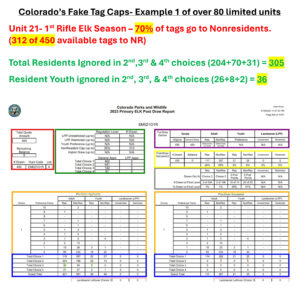The average Western state has a 90/10 big game tag allocation split for resident / nonresident hunters on all limited licenses. 90% of the elk, deer, and pronghorn licenses go to the residents of the average western state and only 10% are reserved for the visiting nonresidents. Big game and the meat they provide families is a resource that should be managed for the benefit of the residents of the state and 90/10 is the equity standard all states should aim to achieve. There are still some states that only offer leftover tags to nonresidents, now that’s preserving the resident public trust (Public Trust Doctrine). What about public lands- do nonresidents have equal hunting rights to federal lands?? No, since the states hold legislative jurisdiction over big game on nearly all federal lands within their state boundaries the fact that there are federal public lands in the state holds no bearing on a nonresident’s status for preference on a state resource. This is a great website for learning about jurisdiction on federal lands. Nonresidents are visitors to a state’s big game draw system and they hold no seat at the table just like they have no voting rights in a state they do not reside in.
Then there is Colorado, Yes, things have slightly improved based on residents shining a light on things in the past three years. This 2021 article helped procure some positive change and the CPW commission improved tag allocation to 75/25 for limited deer, elk, bear, and pronghorn (see this 2023 article) in Colorado. However, Colorado still treats its resident hunters with less tag equity than any other western state, it’s a statistical fact. On top of that, the CPW has finally recognized that overcrowding on unlimited over-the-counter (OTC) elk hunts is real and they are considering removing all OTC elk hunts this year with the CPW Commission – sign the petition, over 5,000 signatures. However, CPW is not sharing the fact that resident OTC elk hunters have declined by 8,000 (20%) since 2014 and nonresident elk hunters are up by 10,000 since 2014. The numbers show that Residents are not contributing to overcrowding because they are getting out of hunting likely because of the overcrowding procured by nonresident hunters. See the OTC Table below.

The (16) sixteen voting member CPW Draw Process Working Group is off and running in Colorado, google them on YouTube. The meetings and discussions are directed by two nonvoting CPW staff. This group has only (5) five resident hunters and (1) one CPW Commissioner (Otero) who represents the approximately 100,000 Colorado resident hunters who apply in limited license and OTC license hunts each year.
The other (10) ten voting members consist of (5) five active CPW state employees, (1) one Utah nonresident (outfitter with Hunting Fool Magazine), (3) three Colorado Licensed Outfitters (CPW Commissioner Haskett, Burbey – President of the Colorado Outfitters Association and Znamenacek who is former CPW staffer and active outfitter), and (1) one other Commissioner that is retired CPW (Skiba). You could say it is 12-6 voting members, likely in favor of more nonresident money/tags.
The approximately 200 Big Game Outfitters in Colorado have 4 “Outfitter” financially motivated representatives lobbying for them within the CPW Draw Process Working Group. If Residents Hunters had an equitable seat at the table, when compared to outfitters, they would have 2000 Resident Hunters within the working group (.02) for their 100,000 residents. However residents have only 5 representatives’ and when you read the bios of the 5 residents you will see many have been a part of outdoor organizations that have a long history of partnering with the CPW vs standing up to the CPW tag allocation equity debacle, like the Colorado Backcountry Hunters and Anglers groups have done. Colorado outfitters depend largely on nonresident dollars for payment so they are not going to restore 30 years of stolen tag equity for Colorado Residents Hunters.
Do you think the nonresident voting member from Utah (also an outfitter) will vote for a 90/10 tag allocation (hard cap) like the one they have in Utah or do you think he will vote for more nonresident tags? I would place that bet over an NFL bet any day. Does Colorado allow nonresidents to vote in its elections? — No, then why does Colorado give nonresident hunters a voting right within the CPW Draw Process Working Group? No state has ever allowed nonresidents the right to control or make recommendations on how to manage a state resource that the state holds all legislative jurisdiction over. The fox is in the hen house and once again CPW has breached the public trust by not serving the residents equitably.
If its 12 to 6 voting members in favor of more nonresident money/tags, residents of Colorado will continue to see the historical effort to hold down resident tag equity. CPW staffers will likely not vote to improve resident tag equity because reducing nonresident hunting will reduce their yearly budget and could lead to lower salaries or staff cuts. Does CPW really need 1100 employees?
CPW Commissioner Ethics and Voting Conflicts
Isn’t it a conflict of interest for a CPW Commissioner to benefit financially by voting in favor of more nonresident tags? A Commissioner/Outfitter Association Member voted against the 75/25 tag allocation improvement last year. “Voting members of the Commission shall not perform an official act which may have a direct economic benefit on any business, including nonprofits, in which such member has a direct or substantial financial interest.” CRS § 24-18-108.5(2) —Conflict of Interest.
“Appearance of impropriety” means an official act that would lead a reasonable person to conclude the Commissioner has engaged in conduct that reflects adversely on the Commissioner’s honesty, impartiality, temperament, or fitness to serve the public trust. An appearance of impropriety may exist even though the facts and circumstances of the matter do not constitute an actual conflict of interest as defined by CRS § 24-18-108.5(2).
Colorado’s FAKE Big Game Caps 75/25
The first real test for the Draw Process Working group comes at hour 3, minute 01 of session 1 https://www.youtube.com/watch?v=MCLlxtPqtB8. The CPW fake tag allocation caps are discussed and no one brings up the fact that resident allocation caps should apply to all 4 draw choices vs just 1st choice in the state’s primary limited tag draw. It’s brushed over, this fake tag cap is a breach of public trust, no other state does this to its residents. Check out this 2023 example, during the 1st Rifle Season in Unit 21- 70% of the tags go to nonresidents and over 300 residents and Resident Youth! are ignored in their 2nd, 3rd, and 4th choices of the primary draw.
There are no hard caps in place for the limited deer and limited elk hunts in Colorado like we see in Arizona, Utah, Wyoming, Idaho, Montana, etc. The current soft (fake) tag caps in Colorado only apply to the resident 1st Choice Draw. There are 4 Draw Choices in the CO Big Game limited primary draw. If there are not enough residents to claim 75% of all the limited tags in Choice 1 draw, the remaining tags are given to all remaining nonresidents within Choice 1. The resident state-mandated tag allocation caps are not honored (hard cap) throughout the 4 draw choices of the primary draw. This is a breach of public trust for all residents of Colorado.
Linked is a document that shows two limited elk hunts in unit 41 (there are many more) from the 2020 limited elk draw results, it shows nearly 50% of limited elk tags went to nonresident hunters last year in unit 41– Grand Mesa. Over 500 resident and resident youth hunters were not able to draw the tag for their 2nd, 3rd, or 4th draw choices because all the tags (over the nonresident cap) went to nonresidents in the 1st draw. This is the result of what is called the “outfitter loophole”. Another example of this is unit 43 mule deer in Colorado, in 2019, 60% of the muzzleloader-limited deer tags in this Gunnison Basin area went to nonresidents. There are many examples like this whether deer or elk limited big game units in Colorado, especially with muzzleloader and 1st rifle elk seasons. Here is a link to thirty-four (34) limited deer unit hunts that gave 41% to 71% of deer tags to nonresidents. In the application column of each page, you see (in some cases) hundreds of resident deer hunters were denied a tag because they put in for 2nd, 3rd, or 4th choice. Here is a link to fifty (50) limited elk unit hunts that gave up to 83% of the tags to nonresidents. Be sure to notice all the hundreds of 2nd, 3rd, and 4th choice residents and resident youth that never drew because Colorado fake big game tag allocation caps.
Some call it a “soft” big game tag allocation cap, most Coloradans call it a FAKE tag cap, and behind the scenes, it siphons hundreds or thousands of tags to nonresidents. All at the expense of the unsuccessful first-choice residents and 1st choice resident youth. If a resident does not successfully draw a limited tag in their first choice, they should not be ignored in their 2nd, 3rd, or 4th choice of the primary draw. An honest big game cap would protect the residents’ rights to their resource until that allocation was filled. There is no reason Coloradans should not be ensured of every tag that is due to them based on the Equity, Colorado Constitution, and the Public Trust Doctrine. Our state representatives and state employees work for the Colorado residents, not nonresident money. This fake cap loophole must be closed, the idea that resident youth are not able to hunt each year because their tag was siphoned off to a nonresident is offensive.
Disclosure -This data is from various sources (CORA, online and print (some data can be very fragmented to collect)). All info is subject to errors and you should verify all numbers with your own research. It is desired that CPW someday validate this information to share the trends of Westerns States compared to Colorado to show the equity status for the residents.


